Designing Chengdu’s Future as China’s Panda Capital
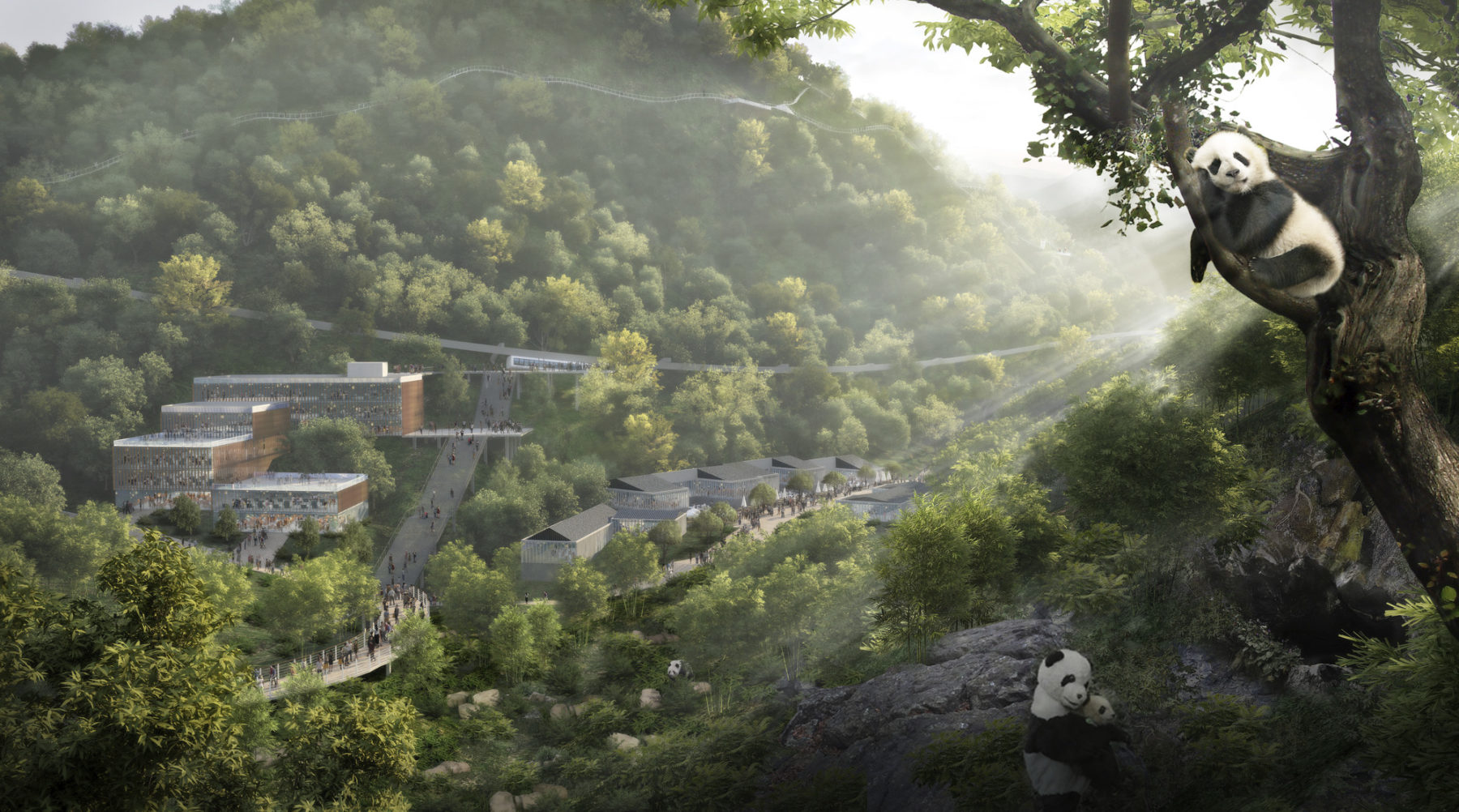
 Sasaki
Sasaki

It is difficult to name an animal more beloved than the giant panda. The near-universal adoration of this endangered species is never far from mind as city leaders in Chengdu embark on developing ambitious plans to thoughtfully grow their city while carefully protecting the panda’s native habitat.
With over 20 million visitors expected to visit Chengdu’s Panda Research Center each year—a figure that surpasses current annual visitors to Disneyland—the city has a tremendous responsibility to advance its development in a manner that is mindful of protecting the panda’s habitat. This means advancing sustainable urban development like the world has rarely seen.
Through a series of projects currently underway, Chengdu has set its sights on conserving habitats for the panda; creating a leading-edge panda research hub; cultivating a multifaceted and culturally authentic tourism destination; and preparing large-scale urban designs for a potential bid to host an Olympic games in the future.
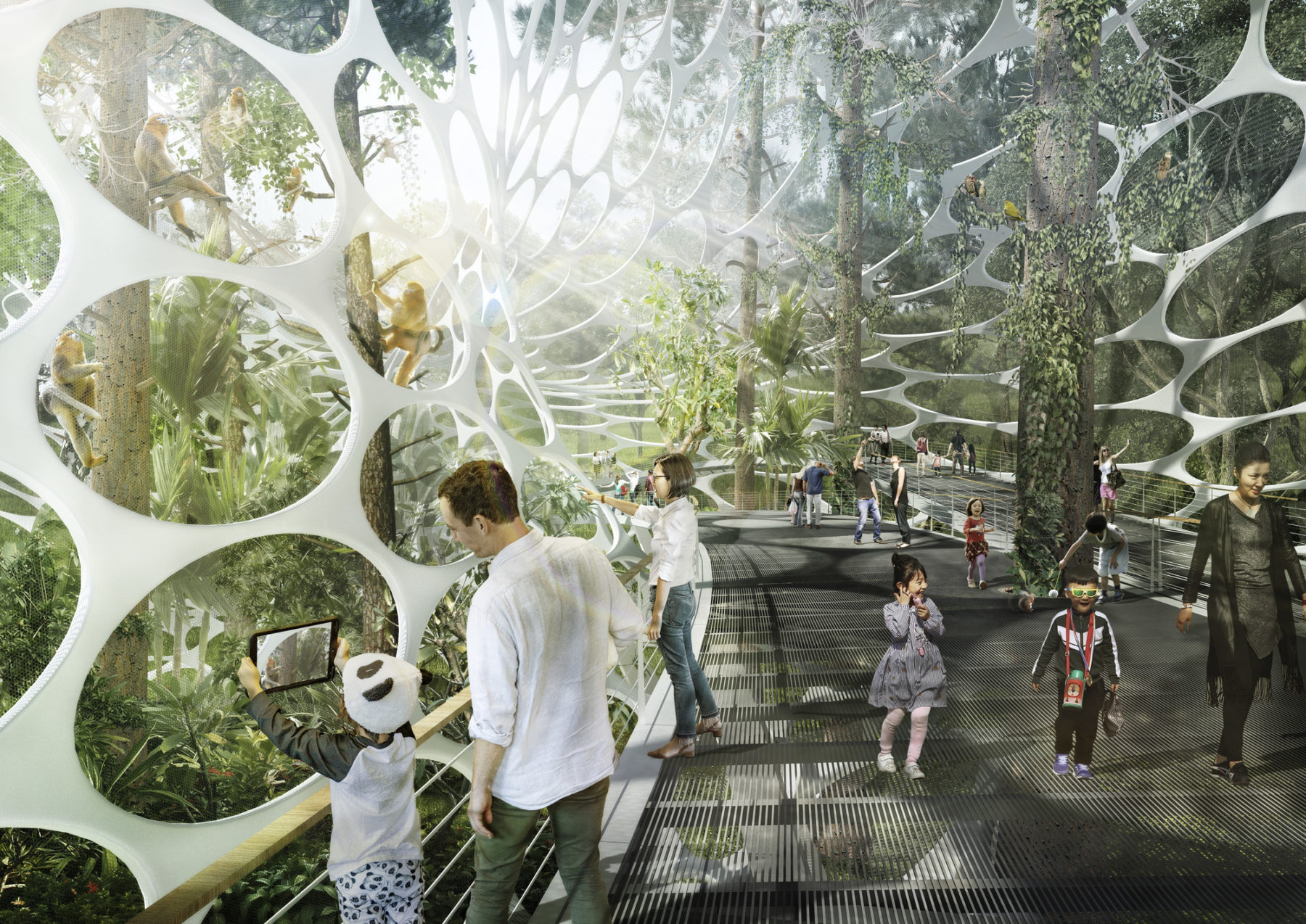
The Giant Panda is an icon of wildlife preservation, and also a critical ‘umbrella species’ for many other endangered wildlife species such as the snub-nosed monkey [shown above], and red panda
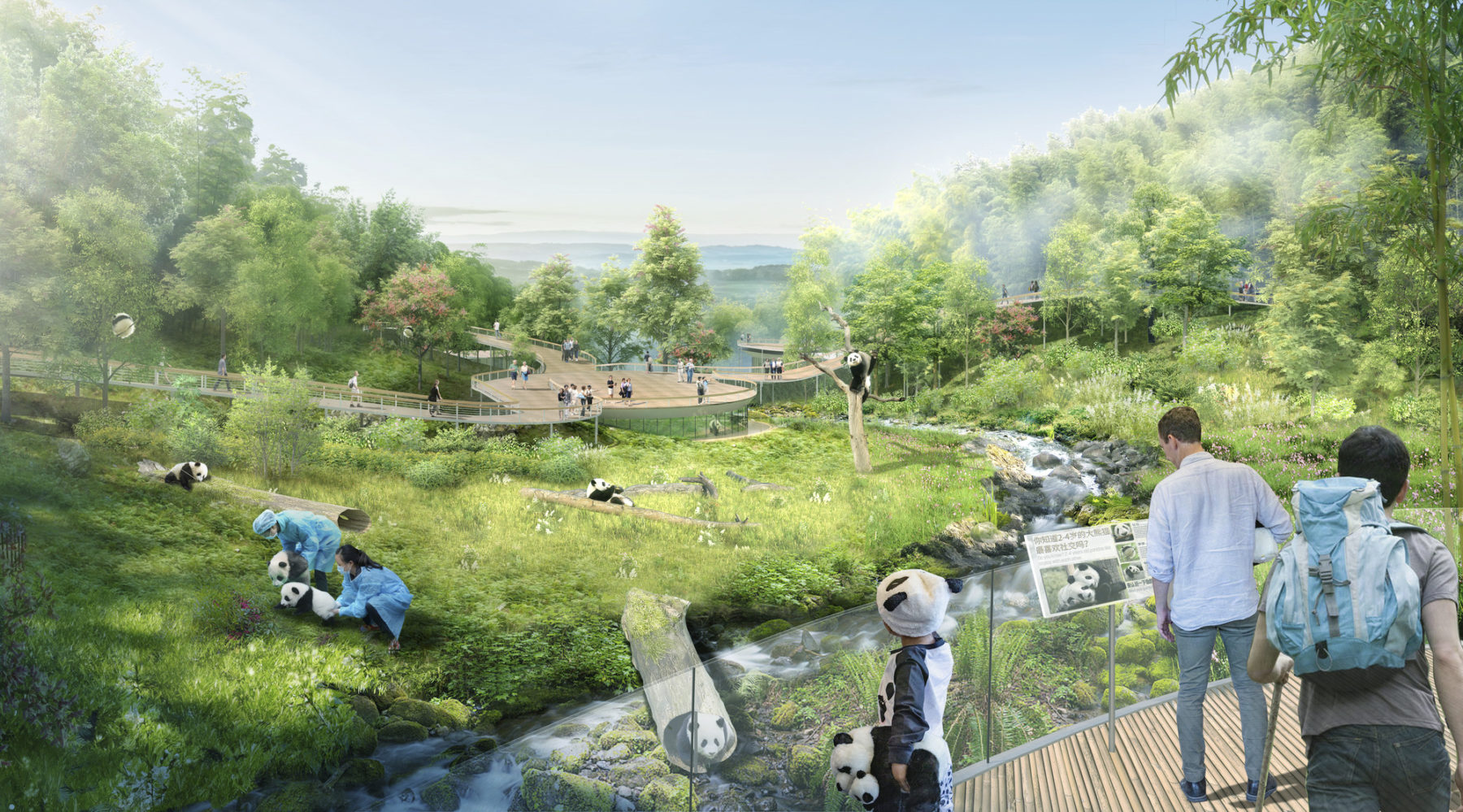
Visitors will learn about the giant panda’s native habitat and the ongoing research to protect the species
Last week, Chengdu concluded an international competition to solicit ideas from around the world for a series of three sites, totalling 69 square kilometers, which enhance the conservation of the giant panda habitat, incorporate a world-wide effort to collaborate on ongoing research, and promote educational outreach so that future generations work to continue to protect the species. Sasaki’s winning proposal for the sustainable development each of the three sites in and around the city leverages our strengths in integrated ecology, urban design, planning, landscape architecture, and architecture.
“Embedded within a long debate around wildlife conservation is a big conflict between wildlife protection and urban development. How do you reconcile human land use and wildlife protection?” Sasaki principal, landscape architect, and ecologist Tao Zhang, PLA questions. “Working as an integrated, interdsciplinary team, we’re aiming to set a new baseline for how cities can achieve a sustainable model that generates win-wins for ecology and development through extensive educational and environment stewardship programs and fully-integrated design approaches. We have a responsibility to find more balanced ways of co-existing with all manner of species and that requires advocacy at the front lines of development.”
The three sites which comprise the Chengdu Panda Capital include:
The Panda Park. This urban destination, close to downtown and linked to the city by public transit, introduces the panda to the millions of visitors who come to Chengdu each year to experience pandas up close. Here, visitors can learn about pandas and their companion species, their shared habitat, and ongoing research and other efforts to protect them.
The Panda Wilderness. Located approximately one hour outside of downtown Chengdu at the foothills of the Tibetan plateau, this research-oriented center is at the gateway to the Panda national park where researchers focus on pre-release training to acclimate juvenile pandas born in captivity prior to final release into the wild.
The Panda Village. Located near the new airport, this gateway into the city and its prized native panda will provide an educational overview of the region’s history, culture, food, and wildlife.
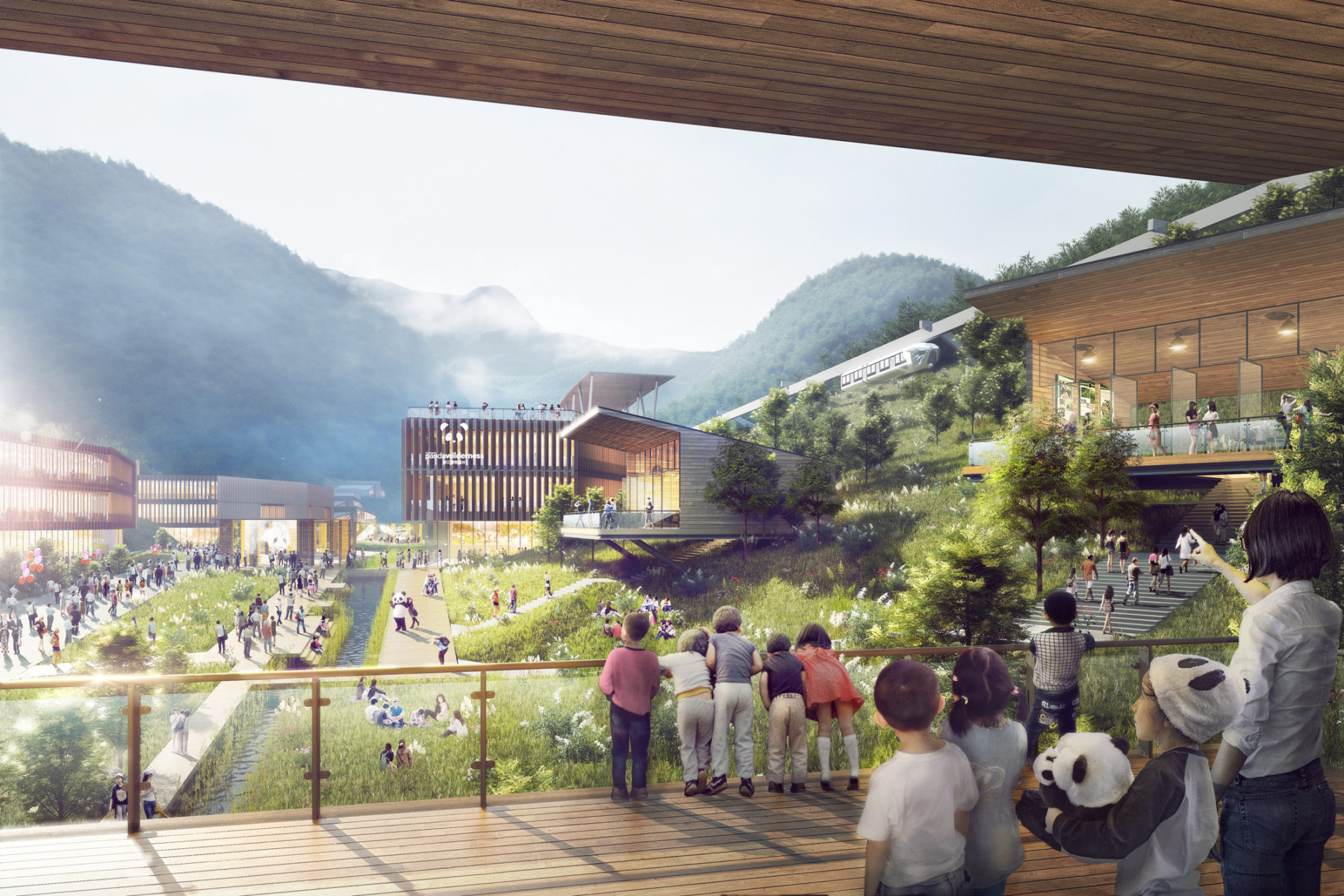
To accommodate over 20 million visitors a year, the Chengdu Panda Capital comprises three distinct sites positioning on research and educational outreach
“The city needs the panda and the panda needs the city. The Chengdu Panda Reserve creates a series of destinations around the city which increases public awareness of the giant panda, its habitat requirements, and ongoing research efforts to protect it. Our plan reconciles Chengdu’s urbanization with a conservation strategy for the panda, providing a sustainable framework to allow both to thrive,” says Sasaki principal, landscape architect, and urban designer Michael Grove, ASLA. “These plans are for their shared future, which was a tremendous design challenge that we feel like we’ve been primed for as a firm with deep knowledge in multiple design disciplines since our founding,”
To learn more about the design thinking behind the Chengdu Panda Reserve project, click here.
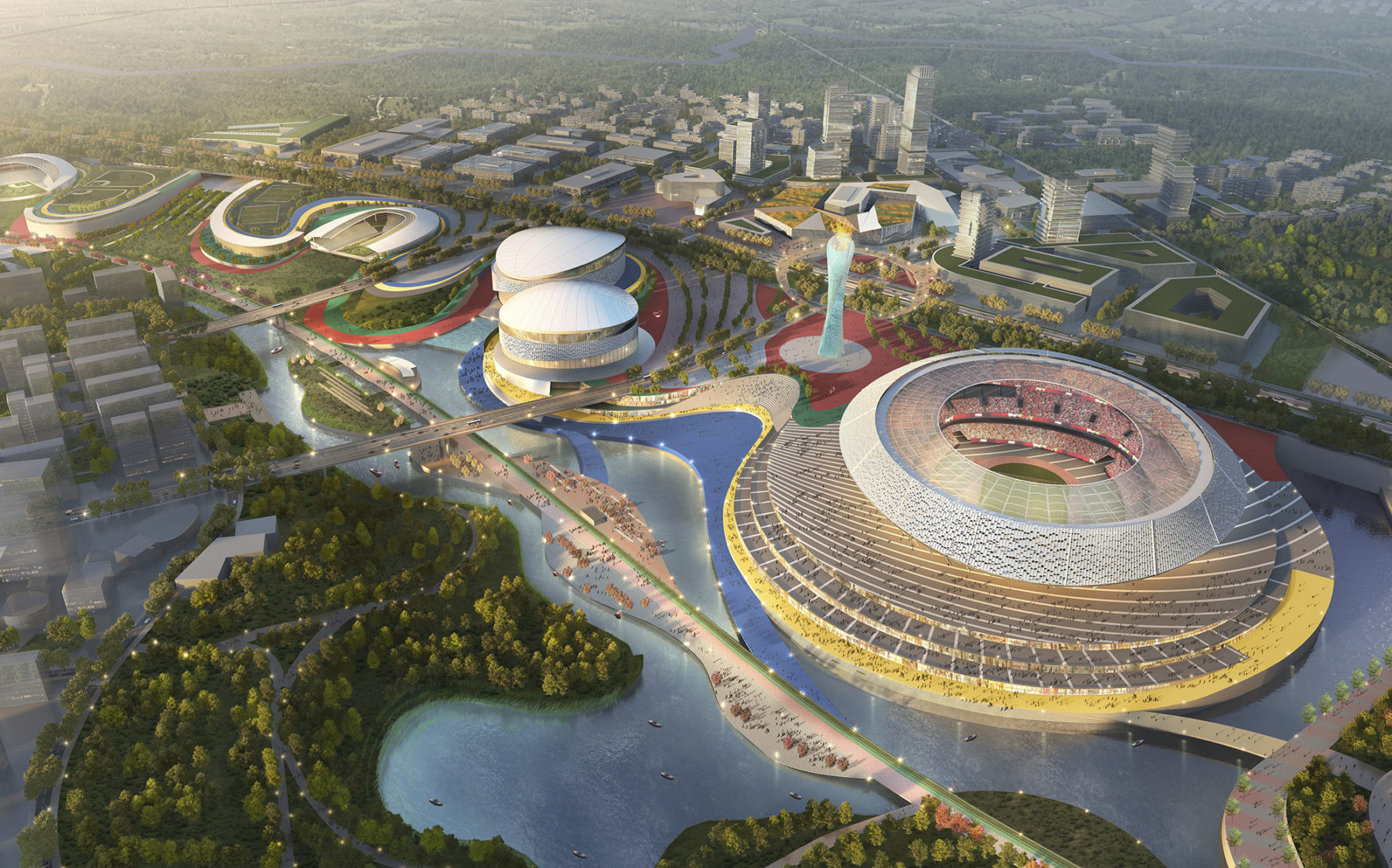
The Sports Axis is inspired by the vernacular rolling landscape in Sichuan and the sinuous Sancha Lakeshore
Earlier this month, Chengdu also selected Sasaki’s conceptual masterplan and urban design of the Tianfu Olympic Sports City—a future sports district which positions Chengdu as a potential host for a future Olympic games. The serpentine spine of the district integrates a series of sports venues into a pedestrian- and transit-oriented experience.
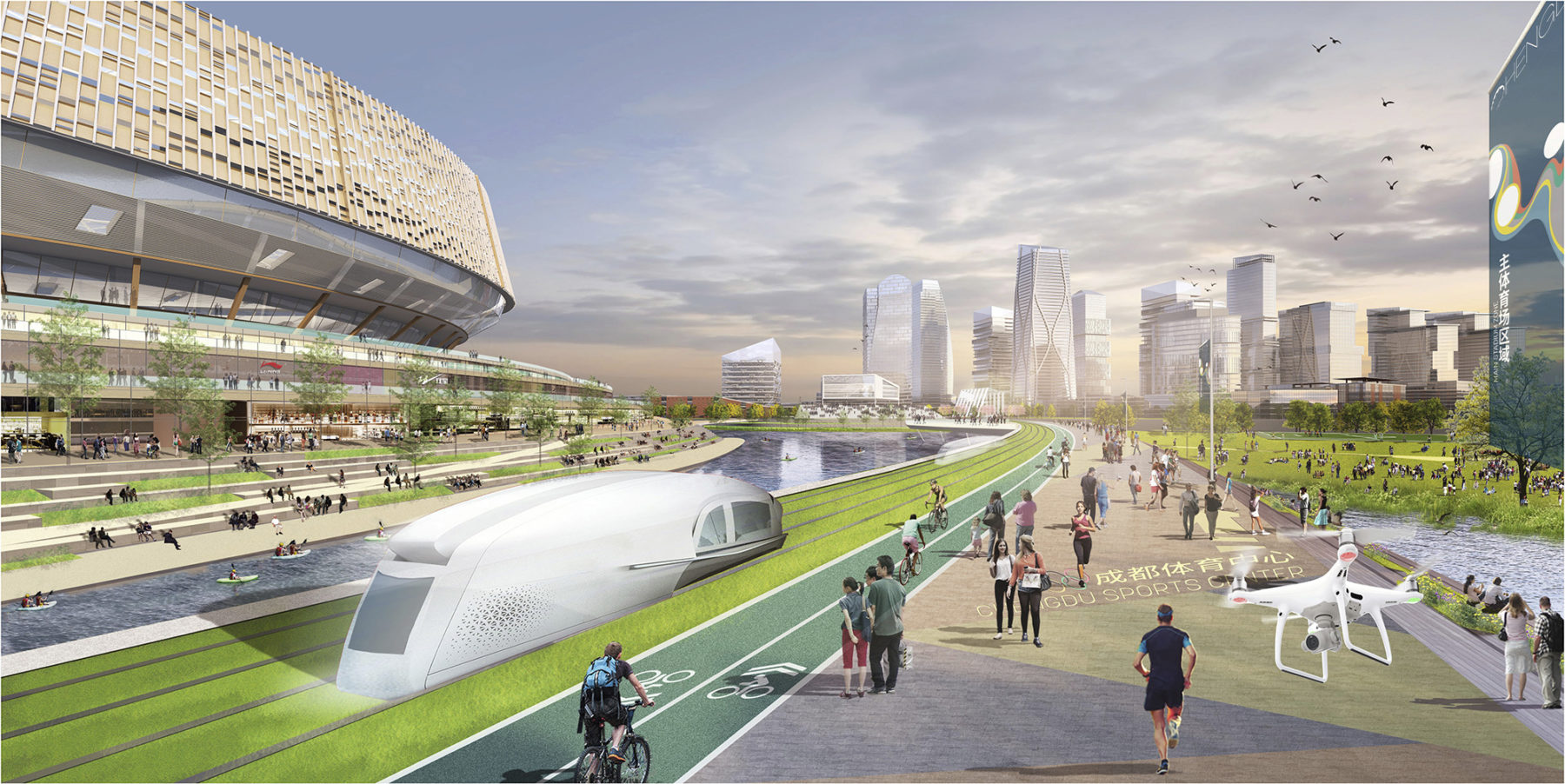
The autonomous tram loop and pedestrian and bike-oriented paths connect the sports axis to the cultural axis and the city beyond
To ensure the site is activated beyond traditional sporting events, the Tianfu Olympic City emphasizes the integration of professional sports events with public recreation and research. A diverse urban fabric is comprised of a full spectrum of block sizes, ranging from monumental large event spaces to an intimate pedestrian-oriented art village at the lakefront. The design utilizes the region’s unique existing terrain and stream corridors to create public spaces and urban parks, with the grid oriented to the northeast to capitalize on the prevailing summer winds for passive cooling.
To learn more about the design thinking behind this Tianfu Olympic Sports City project, click here.